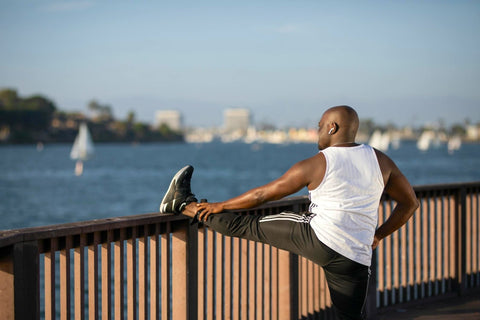Important Signs of Poor Circulation
We’ve gathered a few important signs of poor circulation because we know that our health and energy relies on good circulation. After all, our blood carries oxygen and nutrients to every cell in the body and carries the waste away. We need it!
Ever wonder how that waste is removed from our bodies? The lungs of course release carbon dioxide when we exhale, the liver detoxifies blood by eliminating toxins through our bile and urine and the kidneys filter out other wastes. What an incredible miraculous system!
However, a number of health problems and discomforts can result from signs of poor blood circulation when things are not working so well. The key to early diagnosis and treatment for poor circulation is recognizing the signs.
Signs of Poor Circulation
- Cold Extremities: Cold hands and feet are a prominent indicator of impaired circulation. It becomes more challenging for the body to keep its core temperature normal, particularly in the limbs, when blood flow is limited.
- Numbness and Tingling: Numbness and tingling are common symptoms of reduced blood flow, which can be likened to "pins and needles." Too much time spent sitting or standing can cause this, which usually manifests in the feet and hands.
- Swelling (Edema): When blood doesn't flow properly, fluid can pool in some parts of the body and make them look bloated. The feet, ankles, and lower legs are common places to observe this. Uncomfortable swelling is a real possibility, and it can get worse as the day progresses.
- Fatigue: A lack of oxygen and nutrients can cause the body's tissues and organs to feel drained and sluggish. When you don't have enough energy, it might ruin your day-to-day life and general happiness.
- Pain and Cramps: The muscles may experience pain and cramps due to a decrease in blood flow, particularly when engaging in physical activity. The inability to walk or exercise due to this ailment, known as claudication, is common in the legs.
- Wounds Heal More Slowly: When blood flow is limited, the body has a harder time repairing cuts and scrapes. Inadequate blood supply can cause wounds, scrapes, and bruises to take longer to heal, and in extreme instances, infections can set in.
- Varicose Veins: These are twisted, swollen veins that most commonly show up on the legs. Poor circulation and blood pooling are the results of damaged vein walls and valves, which can lead to these conditions.
- Exploring the Skin: Dyspigdemia is one of the skin-coloring effects of inadequate blood circulation. Insufficient oxygen-rich blood may cause the extremities to take on a blueish or purple hue. Additionally, blotchy or pale skin may be present in certain instances.
- Constipation: Gas and stomach aches are also some of the digestive Issues that can arise from inadequate blood supply to the digestive tract. The absorption of nutrients by the body may be impaired as a result.
- Hair Loss and Brittle Nails: The health of your hair and nails might be impacted by reduced blood flow. A loss of thickness and density in the hair is possible, as is the brittleness and fragility of the nails.
Why Blood Isn't Flowing Properly
- Plaque, which are fatty deposits, can constrict and stiffen the arteries in a disease known as atherosclerosis. One of the main causes of impaired circulation, this limits blood flow.
- Atherosclerosis, more specifically known as peripheral artery disease (PAD), impacts the arteries in the legs. Pain, cramping, and other signs of poor blood circulation can be caused by it.
- Damage to blood vessels and impaired circulation can result from high blood sugar levels, which is one symptom of diabetes. Another factor that might lead to circulation issues is diabetic neuropathy, which is a form of nerve damage caused by diabetes.
- Being overweight: Being overweight makes it difficult for blood to circulate properly because the circulatory system already has a hard time keeping up with the extra weight. Diabetes and hypertension, both of which are associated with obesity, worsen circulation problems.
- The formation of blood clots: When these solidify in the veins, they block the flow of blood and cause impaired circulation. When blood clots develop in the legs' deep veins, it's known as deep vein thrombosis (DVT), and it can cause pulmonary embolism if it gets to the lungs. Yikes!
- Raynaud's Disease: This disorder results in impaired circulation and restricted blood flow because the tiny arteries in the limbs contract excessively when exposed to cold or stress.
- Smoking: Stopping smoking improves blood flow by repairing the flexibility of blood vessels. Atherosclerosis and other cardiovascular issues are also more likely to occur as a result.
- Sedentary Lifestyle: Poor circulation can also be the result of not getting enough exercise. The healthy circulation of blood throughout the body depends on regular physical activity.
Identifying the Causes Relating to Signs of Poor Blood Circulation
Get medical help right away if you think your circulation is low. In order to make a diagnosis, a doctor can do a bunch of tests through a comprehensive physical examination.
In addition to blood tests that can reveal pre existing diseases like diabetes or high cholesterol that can impair blood flow, a doppler ultrasound can see veins and artery obstructions or other conditions out of the ordinary.
In Summary
Your health and well-being can take a major hit when circulation is bad. The first stages in controlling this condition are to recognize the signs and symptoms early on, identify the underlying reasons, and not procrastinate about taking action. Circulation can be improved by changes to lifestyle and especially diet (we LOVE plant-based) and considering medical recommendations. It is important to get the advice of a medical professional in order to diagnose and treat impaired circulation if you notice any symptoms.




Comments (0)
There are no comments for this article. Be the first one to leave a message!